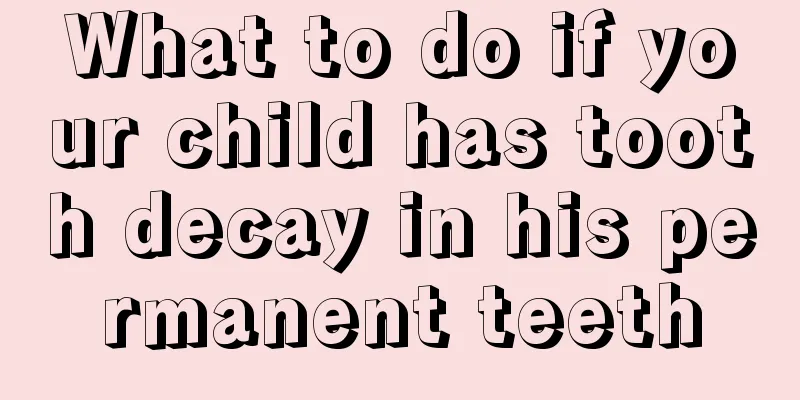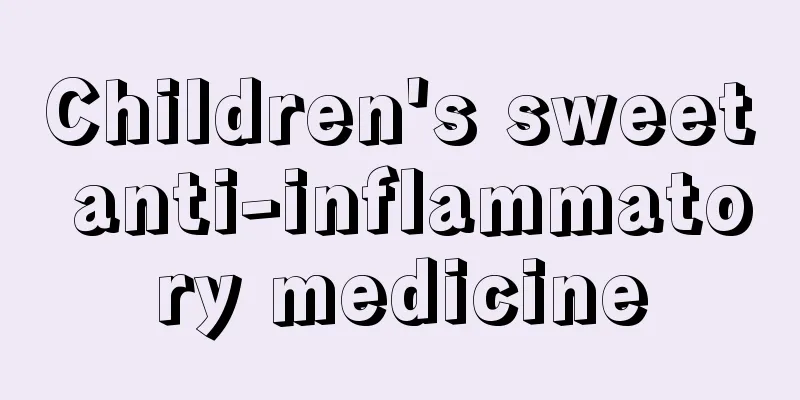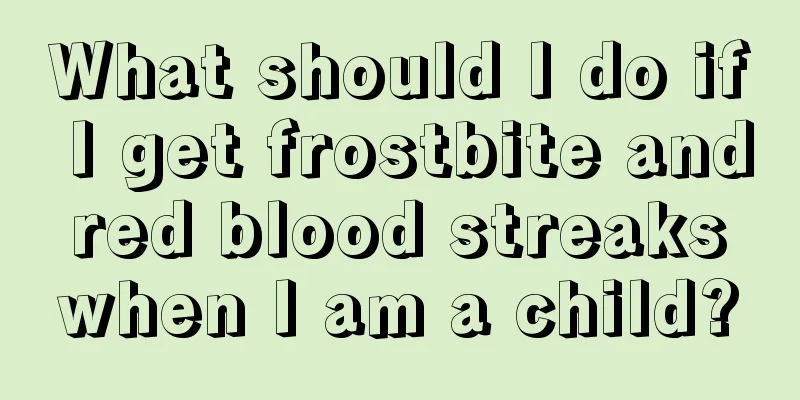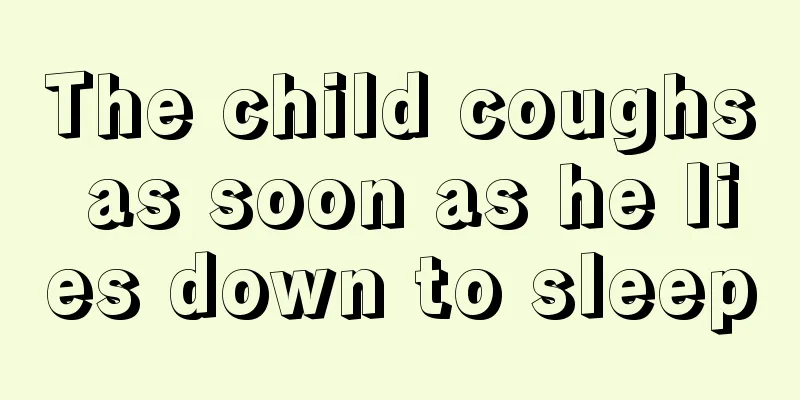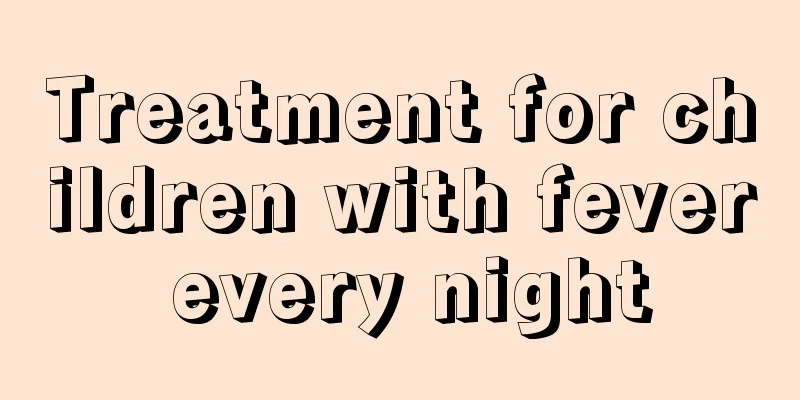Children have a rash after a high fever

|
A high fever in a child has a great impact on his health and must be reduced in time. Some children's fever has subsided, but they have developed a rash. There are many possible reasons for this rash. The most common one is infant rash, which occurs after the fever. We need to have a comprehensive understanding of the possible causes and figure out the situation so that we can better treat it. So, what happens when a child develops a rash on his body after having a high fever? What are the reasons? 1. Roseola infantum Roseola infantum is an acute febrile rash disease of the respiratory tract. It is very common and is more common in children under 2 years old, with infants aged 6 to 12 months being the most common. In the early stages of the disease, the baby will suddenly have a high fever, which may reach 39~40℃, usually without other symptoms. Parents often confuse it with the fever caused by a cold, and even go to the hospital for a check-up, and the routine blood indicators are similar to those of a viral cold. After 3-5 days of fever, the baby's body temperature will quickly return to normal, and then rose-colored maculopapules will begin to appear on the head, face, trunk, and behind the ears. The diameter is about 2 to 5 mm. They will fade when pressed by hand, and the color will return to rose red when the hand is released. The rash will appear within 24 hours and will not cause any pain or itching. After 1 to 2 days, the rash will naturally subside, and there will be no scaling or peeling, and no scars will be left after the rash subsides. Since there is currently no specific medicine to treat roseola infantum, and since it can heal itself quickly and rarely causes other diseases, parents only need to treat the symptoms and provide enhanced care. For example, if the baby has a fever, you should reduce the fever and make sure he drinks plenty of water. 2. Rubella Rubella is an acute respiratory infectious disease caused by rubella virus. It is highly contagious and more common in children. In the first 1 to 2 days after the onset of rubella, the baby will have symptoms of mild upper respiratory tract infection such as low or moderate fever, headache, sneezing, runny nose, cough, sore throat, etc., and the lymph nodes behind the ears, occipital area, and back of the neck will become swollen. A small number of babies may also experience vomiting, diarrhea, nose bleeding, and hemorrhagic macules on the pharynx and soft palate. After 1 to 2 days of fever, the baby will start to develop a rash. The rash initially appears as fine, light red macules, maculopapules or papules, 2 to 3 mm in diameter, and then spreads all over the body within 1 day in the order of "face - neck - trunk and limbs", and the distribution has certain characteristics: the rash on the trunk, especially the back, is dense and will merge into patches, the rash on the face and distal limbs is sparse, and there is usually no rash on the palms and soles. During this period, the baby's body temperature will not continue to rise, but there will still be a low fever, generally around 38°C. The rash usually fades quickly within 3 days, leaving lighter pigmentation or no pigmentation and no scaling. After the rash subsides, the body temperature will slowly return to normal, and the upper respiratory tract symptoms and swollen lymph nodes will also subside. Rubella can occur throughout the year, but is more common in winter and spring. Although rubella is mild, short-term, and has a good prognosis. However, since rubella is highly contagious, parents should avoid taking their children out, and give their children oral medications such as antivirals and antipyretics under the guidance of a doctor. In addition, the sick baby's skin should be kept clean and dry to prevent the baby from scratching and damaging the skin, which may cause infection. 3. Erythema infectiosum Erythema infectiosum, also known as "fifth disease", occurs in children aged 2 to 10 years old, especially in spring and summer. Children often develop the disease suddenly and generally have no systemic symptoms. Sometimes they may have low fever, sore throat, and mild congestion of the conjunctiva and pharynx. After 2 to 5 days of fever, rose-red papules begin to appear on both sides of the baby's cheeks. The surface of the rash is smooth and scale-free, with occasional itching and burning sensations. Then they quickly merge to form edematous erythema with a butterfly-shaped distribution. It looks like being slapped, so it is also called "slap cheek rash". After 2 to 4 days, clearly defined, symmetrical, lacy or reticular maculopapular rashes will gradually appear on the trunk, buttocks, and limbs. After about a week, the rash gradually disappears in the order in which it appeared, leaving no trace. There is no specific antiviral drug for erythema infectiosum, but the disease is usually mild, so parents just need to treat the symptoms. If your baby has a fever, give him/her fever-reducing treatment. If the rash is itchy, you can apply calamine lotion externally to relieve the itching. At the same time, isolation measures should be taken until the rash subsides. |
<<: What are the late symptoms of herpetic pharyngitis in babies?
>>: Newborn baby has rash on face and head
Recommend
One year old baby always cries at night
The baby’s schedule is different from that of adu...
How to relieve hoarseness in newborns
In fact, parents attach great importance to the c...
Parents should be careful that their children may get "kissing disease" after being kissed
Recently, my baby suddenly developed a high fever...
What to do if your child has inverted nipples
When a little princess is born in the family, the...
What to do if your one-year-old baby has phimosis
For the growth and development of their babies, m...
Baby's eyes and nose are blue
The blue bridge of the baby's nose between th...
What are the treatments for oral herpes in children?
Oral herpes in children is an oral disease. Its m...
What causes diarrhea in children?
Children at home are the apple of their parents’ ...
Children's cough massage technique
Children's bodies are still in the developmen...
Introduction to children's health care knowledge in autumn
As autumn approaches, the temperature difference ...
Children swallowing saliva while sleeping at night
It is normal to swallow the saliva in your mouth ...
What foods can a nine-month-old baby with moderate anemia eat?
Babies are prone to anemia during their growth. A...
What vegetables should students eat to nourish their brains?
Nutritionists point out that we should eat more v...
Can babies take a bath when they have acute rash?
In life, we must pay attention to the physical he...
Why does a 2-year-old baby not eat?
The issue of children’s eating is a big problem f...
